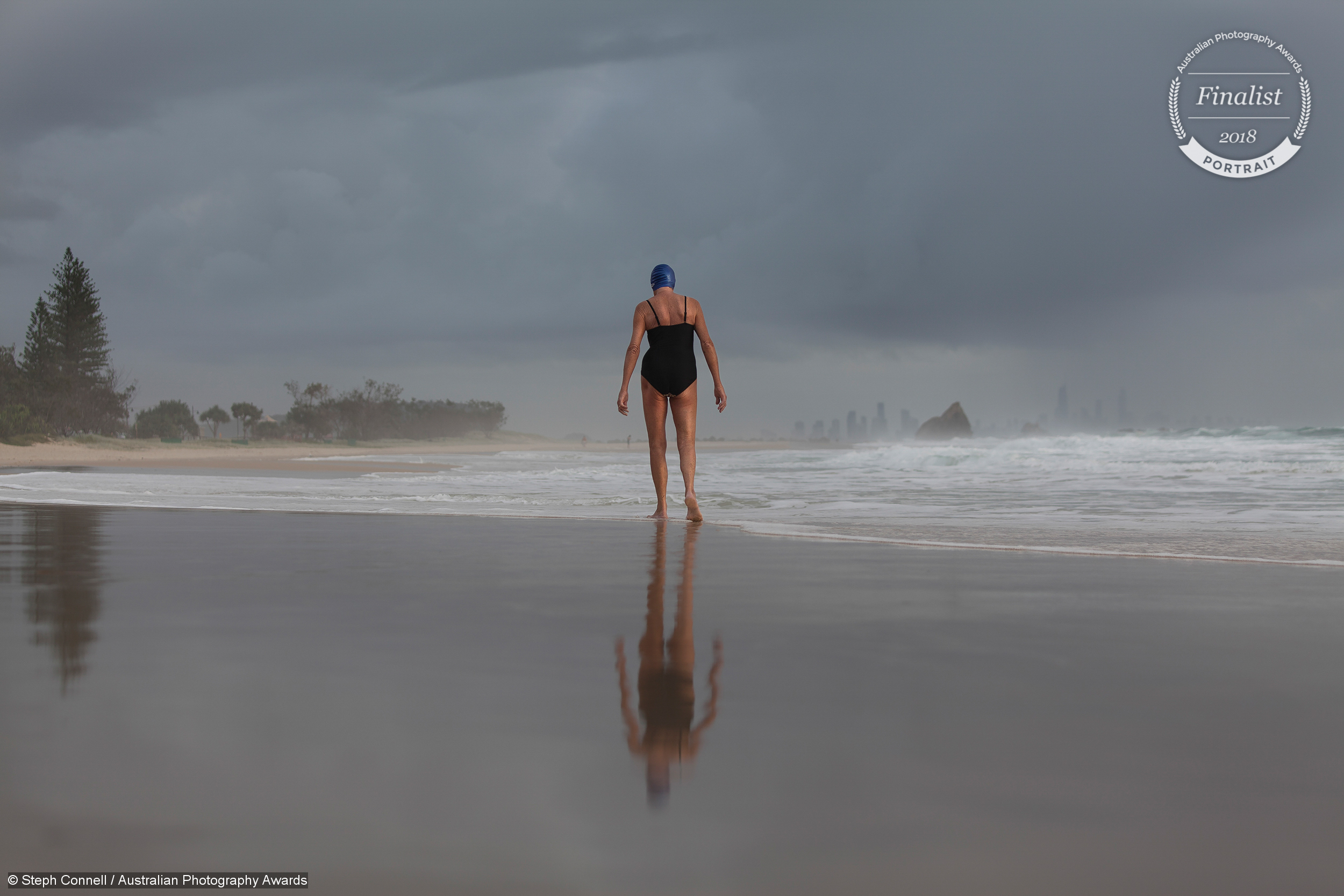This week we caught up with APA finalist Steph Connell and heard the moving story behind her image ‘Lois’ which came 4th in APA’s 2018 Portrait category.
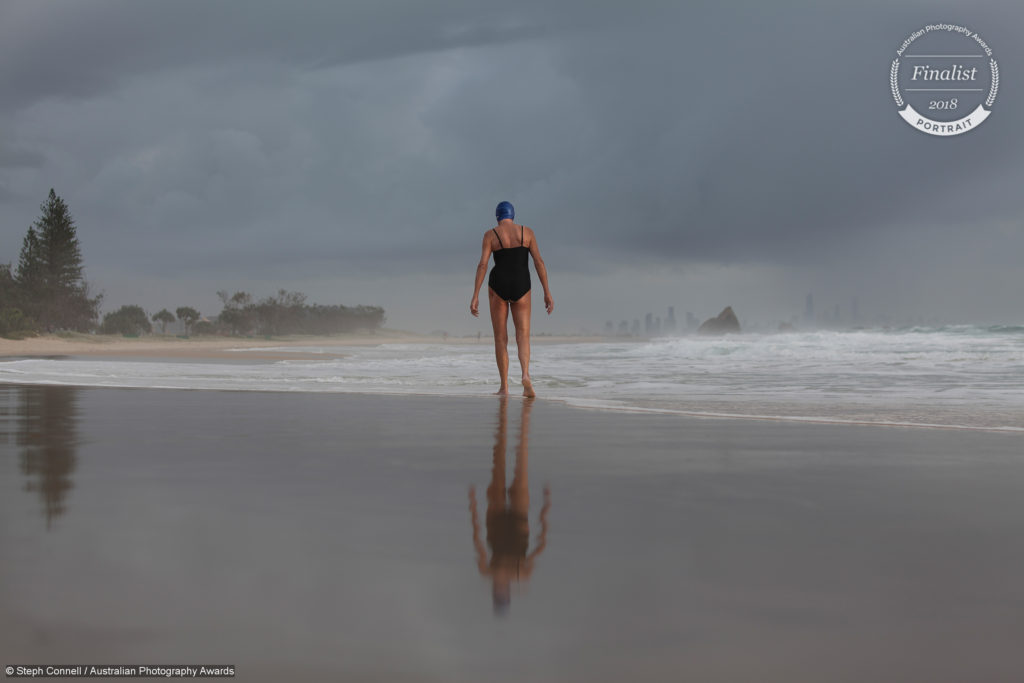
1. Can you tell us a bit about yourself and what made you pursue photography?
My background is in Fine Art. It wasn’t until I was given a camera in 2010 that I became somewhat obsessed. I saw the frame of an image no different to the frame of a canvas and the light captured was like the medium used by an artist. My desire to understand light was unquenchable. I spent three years studying at University and completed a degree in Photography with a major in Photojournalism back in 2015. It opened up opportunities and created some incredible experiences, especially the work I’ve done in regional areas. I’m gearing up now to take workshops into rural areas throughout Australia that don’t have great access to hands on learning. While I’m on the road I’ll be working on a longer body of work focusing on women on the land.
2. Your image, ‘Lois’, is a beautiful portrait for its visual aesthetics alone. More than this, the story of Lois lends the portrait with a touch of poignancy. Can you tell us more about Lois and her connection to the ocean?
When Lois was seventeen, Sporting Life Magazine wrote an article saying that she was one of the best woman body surfers they’d ever seen. Her day to day life consisted only of things needed to be done when she wasn’t in the ocean. Her two children Don & Faye were no different. The ocean was their life. Back in 1978 Lois son Don, lost his life paddling off Currumbin Rock in Qld. Lois walked the beach in search of her son and scripted this poem on the third day he was missing.
Where are you son?
I sit here sharing the feel of your watery grave
I joined you son, on Monday morning, it was 5am
The sun was shining, the sea was calling me
I felt so close to you then, my legs felt like jelly
I walked up to the rocks hoping to find you there
The tide was just washing the weeds to and fro.
The sea has called me twice more
And each time my spirits lifted
You were near me
my dear, I shall never leave you
You were my life
I’ve checked the waves for you, at your favourite rock
I’ll never pass that way without reaching out to you
Dear God, please release him
Your ever-loving Mum
Dons body was found the next day.
Every morning since, until just recently, Lois swam at that same place. Her health has declined this past year and she no longer makes it down to the shoreline. I gave her a print of the image and it now hangs between her bedroom and her bathroom. She stops at it every morning and says to herself, “Look at you, enjoying that early morning swim”. In a beautiful way, she has told me, it helps her stay connected.
3. What an incredible story. This adds another whole level of depth to the image. Photographer Alfred Eisenstaedt said, “it is more important to click with people than to click the shutter”. Do you agree with this statement? Using ‘Lois’ and an example, in what
ways do you connect?
Connecting with people and building trust creates a vulnerability in photography that the camera alone cannot achieve. The camera is simply a paint brush in the hand of an artist waiting for something remarkable and you can see that in Alfred’s work. When I look at the image of Lois, it reminds me not so much about the day or the technical aspects, but about the connection and trust built over time. I’d been photographing in and out of the water on that beach for some time. All drenched and sometimes cold we’d shower every morning at the surf club. It was one morning in the showers that Lois opened up and told me her story. I don’t think at the time I was consciously thinking out loud that I must go and get a special shot of Lois, but I do think that the bond between us, the honesty, being present over time created a depth to the image that goes beyond its technical values.
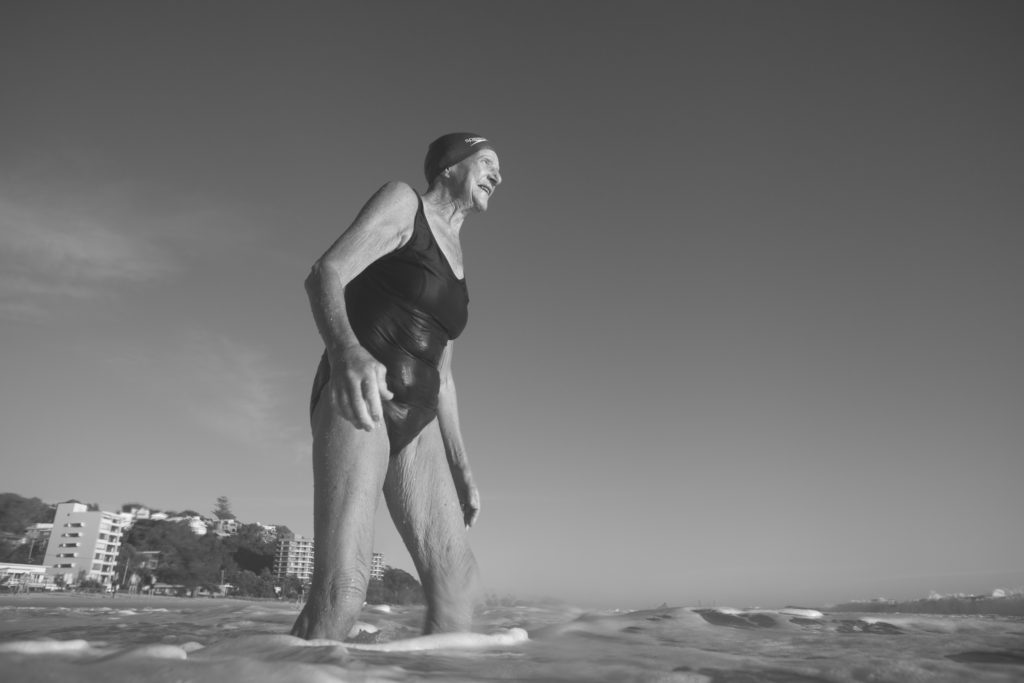
4. What were the technical decisions and artistic intentions underpinning ‘Lois’?
I’d always take two cameras on the beach with me every morning, one camera had a wideangle lens encased in an Ikelite housing device that I’d take in the water and then I used a 70- 200mm f/2.8 when I was on the beach. The reason I chose a zoom lens was to distance myself. Whether I was there or not, Lois would have walked into that ocean, as she had done every morning since 1979. As she wrote in her poem. “I’ll never pass that way without reaching out to you”. That’s the story, and for me as a photographer, it was important to document without interfering. The zoom gave me the distance and was the right paint brush so to speak. It helped remove me from the picture.
5. Did you encounter any challenges while capturing ‘Lois’?
The image of Lois was born over a longer period of early mornings on the beach. Even though it’s a short walk from my front door, the weather conditions were continually changing and there were many days that the conditions were rough, cold and windy. Sometimes the challenge was just leaving the comfort of home, but Lois was there, every single morning, without fail, so she became my get up and go. The very thing that was a challenge, the weather, became an intrinsic part of the beauty of the image and a testament to Lois and her commitment to Don.
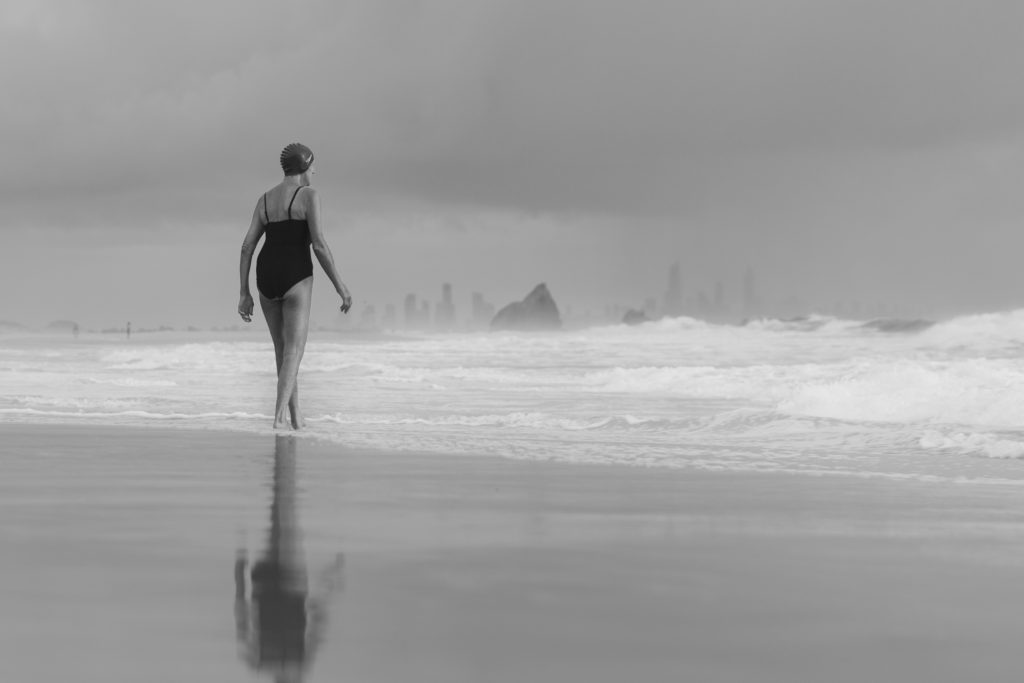
6. What do you love most about photography?
I love that there is no end to discovering its depths. Photography is like a mirror that teaches us about ourselves, our environment, our place on this planet. To me, most of all, it’s a language, a way of communicating, a way of sharing how I see the world.
7. If you could give one piece of advice to other photographers, what would it be?
Fall in love with light!
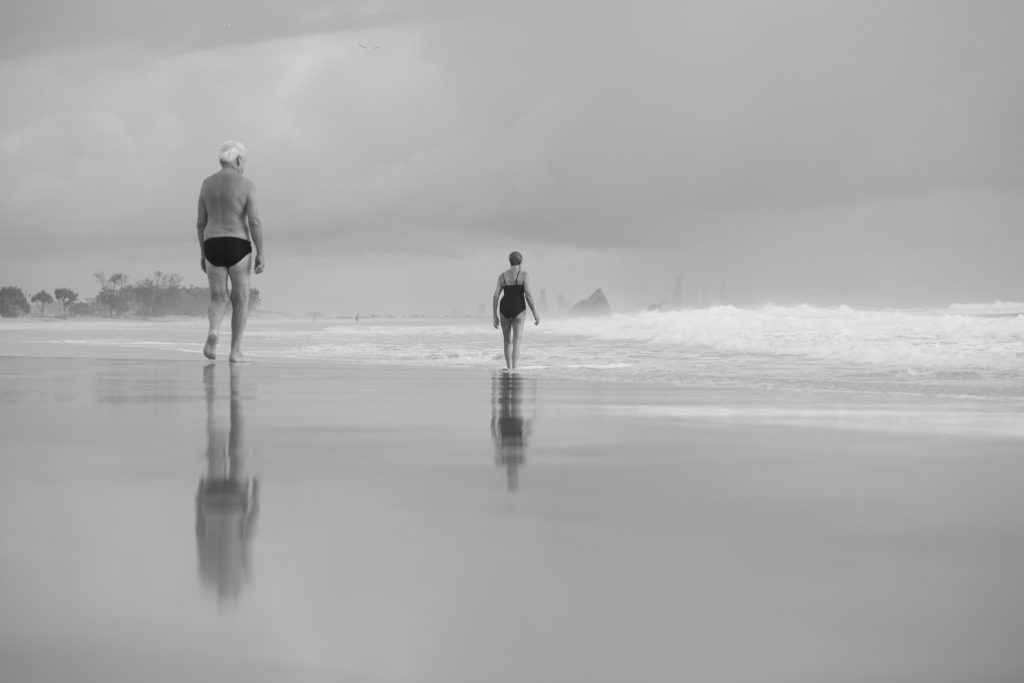
If I woke up on Christmas morning and found a Phase One camera system or Profoto B10’s under my Christmas tree, I’d do backflips, I love gear. During my degree we used Large and Medium format cameras and sometimes 35mm if we were lucky. It makes you appreciate how far we’ve come, but whether I’m using a pin hole camera or the latest technology, it’s all about the light.
To see more of Steph’s work head to –
Instagram: @stephoto_
Website: https://stephconnell.co/


